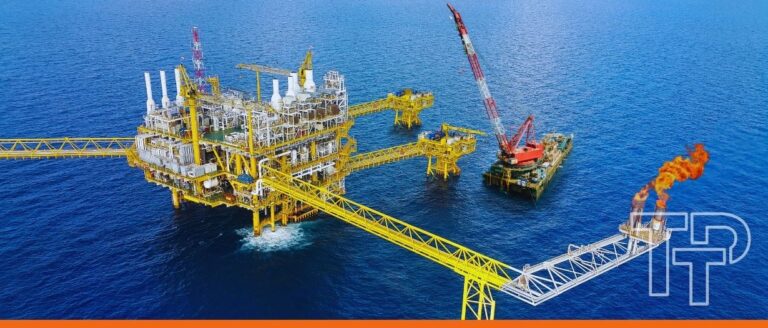After a century-long hiatus, tariffs have returned to the centre of global trade discussions as the policy signals coming from Washington are louder than ever, but clarity remains elusive.
As new tariffs roll out, companies are being forced to react on the fly. There are announcements without details. Policy shifts without warning. Each decision sets off a chain reaction through supply chains, financial models, and trade operations.
Such is the backdrop to Trade Treasury Payments’ (TTP) livestream, The Triple T: Tariffs, Treasury, and Trade Finance, where TTP Editor Deepesh Patel spoke with Dmitry Grozoubinski, Trade Consultant and Author of ‘Why Politicians Lie About Trade’, George Riddell, Managing Director of Goyder Ltd, and Leah Scarpelli, Partner at Arentfox Schiff LLP.
Listen to the podcast:
Policy keeps shifting and businesses are left guessing
For those managing trade, treasury, or risk, the current moment feels like trying to solve a puzzle without knowing what picture it’s meant to form. Tariff announcements are sometimes made overnight through social media, bypassing traditional processes and leaving companies scrambling to make sense of what’s changed.
Grozoubinski said, “This is simply not an administration that believes that huge amount of transparency, transition time or warning is an important consideration.”
The rates announced on billboards or platforms often don’t match the formal executive orders, and there is confusion over how rules apply, when they take effect, and how long they might last. Though, as the impacted institutions have had some time to work on the details, we may now be moving into the practicality phase of the new tariffs.
Scarpelli said, “What we’ve seen with this administration is the big, splashy, brash announcement that’s very short on details, and then the details come later. For some of these liberation day and other announcements, we’re seeing customs now slowly start to fill in the practicalities of how these tariffs are implemented and what importers have to do to enter things correctly.”
As it stands, however, importers must still navigate multiple overlapping tariff regimes with very few clear instructions. Some are forced to delay shipments. Others rush to bring goods in before new rates kick in. In many cases, it’s not clear which tariffs take precedence. Guidance is often vague or delayed, making it difficult to ensure compliance.
Riddell said, “How do you react to all of these different announcements and their practical implications? At first, there is definitely an information overload. How do you translate what are quite chaotic announcements into practical implications for our customs operation, CFO, or tax director?”
For many businesses and professionals working in the space, this results in a constant sense of improvisation.
Global trade is shifting in response to US moves
The US may be driving much of the tariff action, but other countries are no longer standing still. Some nations resist the temptation to mirror US tactics directly, but they quietly adjust trade relationships and tighten internal rules to prepare for what may come.
Grozoubinski said, “There are very few global actors with anything like the commercial muscle or the consumer final demand to do anything on the scale of what the US has done over the last couple of months.”
China has been positioning itself as a stable and rule-abiding trade partner in contrast to the US. It is actively promoting the narrative that it plays by global trading rules and offers a safe destination for investment, aiming to distinguish itself from the US’s aggressive, tariff-driven approach.
Europe is responding by using access to its market to promote its own environmental and social standards rather than mirroring the US’s tariff tactics. While it is unlikely to adopt aggressive trade measures on the same scale, it is quietly rebalancing its trade approach to address regulatory gaps and reduce the risk of manufacturing arbitrage.
Grozoubinski said, “Having the largest player in the global trading system so brazenly opt out of its underlying principles certainly increases the temptation and decreases the taboo for others to do the same. What may begin as, for example, retaliation against the US could very well evolve into other areas. One of the foundational principles of the WTO and the other trading rules is the idea that protectionism is politically tempting. That temptation hasn’t gone away.”
For corporates, this presents a new challenge. It’s no longer enough to understand the rules. They must also anticipate how major players may rewrite or ignore them. A strategy that works today might not hold true tomorrow. That uncertainty is forcing decision-makers to think differently about their trade exposure and to monitor global signals more closely than ever before.
Trade compliance has become a company-wide concern
The stakes have changed which means that trade compliance can no longer live in a silo. While in the past, it might have been the responsibility of a single department or an external broker, compliance efforts now need support from the top levels of organisations.
Scarpelli said, “This is no longer an issue that can be outsourced to a single person in the company. When the tariff rates are this high and the implications are so stark of getting it wrong, there’s really a spotlight on trade compliance and tariff issues. It has to be a C-Suite level issue. There has to be buy-in in the company, and people have to understand what’s going on with tariffs to be able to react very quickly to changes in the guidance or the rates.”
When teams are engaged and aware of the implications, they are better suited to make decisions that can help to address changes as they arise. Being able to work across functions and with other departments will also be key.
Riddell said, “The situation requires quite an extensive conversation between the treasury function and everyone else in the business, because there are costs associated with changing suppliers and supply routes.”
Even sales teams are being pulled into conversations about how tariff shifts could affect margins and delivery timelines. As customs audits become more aggressive, there is growing awareness that even small missteps can lead to bigger problems.
Scarpelli said, “We’re already hearing stories of US customs increasing staff, and they’re really being aggressive with audits and going after companies that are doing it incorrectly. Even companies that are trying in good faith to import goods correctly are getting tripped up just because of the number of tariffs and the complex instructions.”
—
Given its prominence over the past few months, trade can no longer be considered a background function. Tariff policy now affects product design, supplier selection, financial risk, and customer pricing.
The volatility in tariff announcements and implementation is exposing the fragility of old ways of working and pushing companies to build more flexible, cross-functional systems for compliance, liquidity management, and supply chain design.
While our livestream may not have brought easy answers, we hope that it has presented the current trade environment in a different light and offered a chance to reimagine how trade, treasury, and policy connect.



